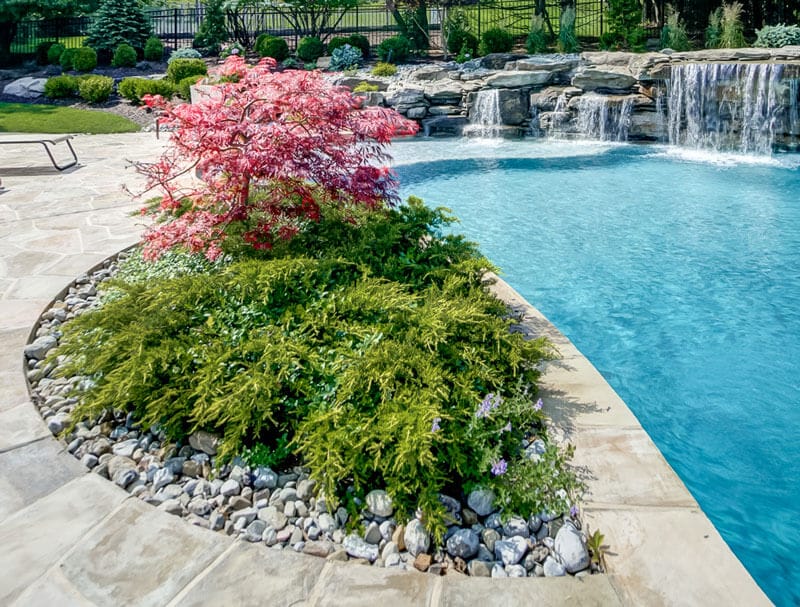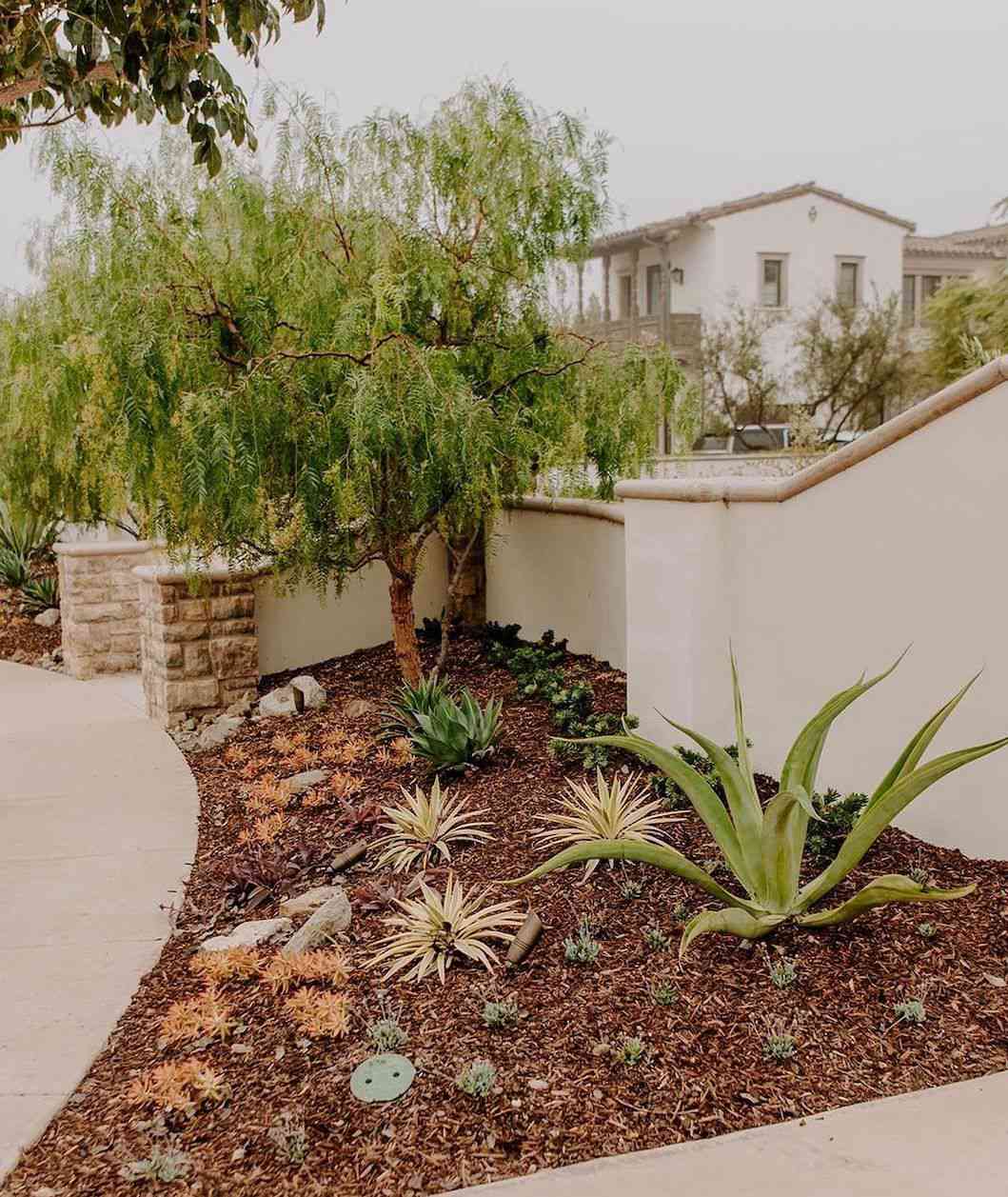Xeriscaping Ideas for a Water-Efficient and Beautiful Yard
By Innovation Grounds
In today’s world, where water conservation is more critical than ever, xeriscaping has emerged as an innovative and sustainable landscaping solution. By focusing on drought-tolerant plants and efficient water use, xeriscaping allows homeowners to create stunning outdoor spaces while conserving water. Whether you’re looking to reduce your water bill, contribute to environmental conservation, or simply want a low-maintenance yard, xeriscaping offers a range of benefits.
What is Xeriscaping?
Xeriscaping is a landscaping method designed to reduce or eliminate the need for supplemental watering. It utilizes plants that thrive in arid or low-water conditions, along with other techniques such as soil improvement, mulching, and efficient irrigation systems. The term “xeriscape” comes from the Greek word “xeros,” meaning dry, and it emphasizes water conservation while maintaining a visually appealing garden.

Xeriscaping Ideas for a Beautiful, Water-Efficient Yard
Choose Drought-Tolerant Plants The cornerstone of xeriscaping is selecting the right plants that require minimal water once established. Native plants are typically the best choice because they are adapted to local climates and soil conditions. Some popular drought-tolerant plants include:
- Succulents: Agave, aloe vera, and yucca are perfect for xeriscaping, as they store water in their thick leaves.
- Lavender: This fragrant herb thrives in dry conditions and attracts pollinators.
- Cacti: With their striking shapes and minimal water needs, cacti are a standout in a xeriscaped garden.
- Wildflowers: Many native wildflowers like Black-eyed Susan and Blanket Flower are not only water-efficient but also add vibrant color to your landscape.
Group Plants by Water Needs When designing your xeriscaped garden, grouping plants with similar water needs is crucial. By placing plants that require more water near each other and drought-tolerant plants in dryer zones, you can ensure efficient water use. This approach minimizes water waste and helps maintain a balanced landscape. Additionally, consider creating a “dry zone” with rock gardens or gravel to enhance the natural look of your garden while conserving water.
Improve Your Soil Healthy soil plays a pivotal role in a water-efficient garden. Adding organic matter like compost or mulch improves the soil structure, allowing it to retain moisture for longer periods. Good drainage is also essential, as it prevents water from pooling around plant roots. Consider aerating your soil and incorporating organic material to promote healthy root growth and reduce the need for frequent watering.
Use Mulch to Retain Moisture Mulch is an essential component of xeriscaping, as it helps to retain soil moisture and prevent evaporation. Organic mulches such as wood chips, bark, or straw also add nutrients to the soil as they decompose. Inorganic mulches like gravel or stone can create a more modern look while still offering moisture retention. Apply mulch generously around your plants, but be careful not to pile it against the stems or trunks of plants to avoid rot.
Incorporate Efficient Irrigation Systems While xeriscaping is designed to minimize water use, an efficient irrigation system can further enhance its effectiveness. Drip irrigation systems deliver water directly to the plant roots, reducing waste and ensuring that water goes where it’s needed most. If you’re in a region with limited rainfall, consider installing a rainwater harvesting system to collect and reuse rainwater for your garden. Smart irrigation systems that adjust based on weather conditions can also help conserve water by ensuring that plants are watered only when necessary.
Design a Beautiful Xeriscaped Landscape Xeriscaping doesn’t mean sacrificing beauty for efficiency. With thoughtful design, you can create a visually appealing landscape that thrives on minimal water. Consider using rocks, gravel, and stones for hardscaping elements like pathways or garden borders. Combine textures and colors by incorporating plants with different leaf shapes, sizes, and blooms. Think about creating focal points with sculptures, water features, or architectural plants that stand out and complement the overall design.
Include Hardscaping Features Hardscaping, such as patios, pathways, and retaining walls, plays a key role in xeriscaping. By using materials like flagstone, pavers, and crushed gravel, you can reduce the area that requires irrigation. Hardscaping elements also add structure and dimension to your yard, creating interest and flow while minimizing the need for lawn maintenance.

The Benefits of Xeriscaping
The advantages of xeriscaping go beyond water conservation. By adopting xeriscaping principles, you can reduce your environmental impact, lower water bills, and create a beautiful outdoor space that requires less upkeep. Xeriscaped gardens are also more resilient to droughts and climate change, making them a smart choice for areas prone to dry conditions.

Final Thoughts
Xeriscaping is an excellent way to create a water-efficient, beautiful yard that aligns with sustainability goals. By choosing drought-tolerant plants, grouping them wisely, improving soil, and incorporating efficient irrigation systems, you can enjoy a lush, low-maintenance garden that thrives with minimal water. Whether you live in a dry climate or simply want to reduce your environmental footprint, xeriscaping provides an eco-friendly solution that doesn’t compromise on beauty.
Start planning your xeriscaped garden today, and watch as your yard transforms into a stunning, water-wise oasis!



